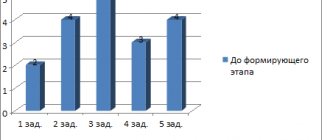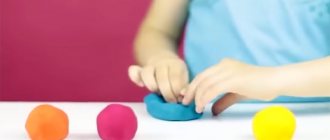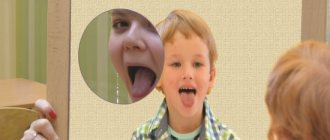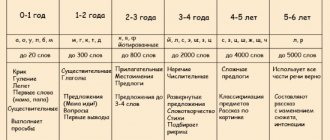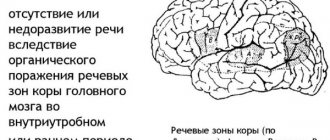To successfully study in primary school, children must be able to concentrate their attention and analyze the information received from the teacher. These abilities should be constantly trained and improved. And in order for the teacher to understand whether the student needs correction of these aspects, he can conduct a simple test called the “Schulte Table”. The exercises for children using this technique are simple, but very effective.
What is the essence of Schulte tables?
The Schulte table, or rather their complex, is a psychodiagnostics with which a psychologist, teacher or parent can examine the stability of a child’s attention, its volume and the ability to distribute this attention between objects. The technique also allows you to understand how effective the student’s independent work is. Moreover, the exercise promotes the development of peripheral (in other words, side) vision, which is extremely important for mastering speed reading.
Each table of this technique is developed by the German psychiatrist Walter Schulte. This system has been known to the world since the second half of the twentieth century. The table is a card with the image of a square in which numbers are written randomly. A standard picture is a thick sheet measuring 60x60 cm, divided into 25 squares, each of which contains a number from 1 to 25. Based on the test task, the primary school student must name and show (if convenient, cross out with a pencil) all the numbers in the correct order. You can complete the exercise online, or you can download and print ready-made tables in the required quantity for regular practice at home.
The technique helps:
- understand how stable the child’s attention is;
- verify the effectiveness of independent work;
- examine the mental stability of a student;
- increase attention span;
- improve the speed of orienting-search movements of the gaze;
- adequately evaluate the acquired knowledge;
- quickly, firmly, and most importantly, productively master the educational material.
The Schulte table helps in training, expanding and developing peripheral vision. Regular use of the test has a positive effect on reading speed: the child will be able to quickly find the necessary information parts of the text, therefore, he will read faster.
How to use Schulte tables correctly?
The first rule is that the table should be at a distance of 30-35 cm from the child’s eyes. In this case, it needs to be raised at a slight angle. Next, the preschooler or primary school student must focus his gaze on the center of the card - it is forbidden to look away to the sides, as this will not achieve the desired effect. Further diagnostics are carried out as follows:
- The child holds the chart, looks at it for 10 seconds, and then must turn it face down.
- The student must concentrate on the material he has viewed.
- Next, you should turn the table back over and use a pencil to connect the numbers from 1 to 25 in order, without thinking for a long time about your actions.
- Each number must be said out loud.
- The test can be repeated several times using new cards.
While the child is connecting the numbers in direct order, the teacher must time the stopwatch and record the time it takes the student to complete each individual card. It is not recommended to use more than 10 cards in one training session. Each lesson should last about half an hour. It is advisable to exercise 3-4 times a week. With regular testing, the first results will be visible after 21 days.
It should also be understood that a preschooler will not be able to immediately cope with a 5x5 table. Therefore, simplified versions of 3x3 or 4x4 are allowed. For younger students, 5x5 tables are considered an ideal option. As soon as the first successes in improving the orientation in the depicted elements are noticeable, the size of the tables can be increased to 6x6, 7x7 and 8x8.
I also advise you to pay attention to other exercises
The complex will be harmoniously complemented by:
- Tongue Twisters
- consonant tables
- role and choral reading
- “tug” (the adult runs his finger along the lines, the child speaks out loud)
- answers to questions after the work
- learning poetry by heart.
Studying is a difficult period in the life of parents. I don’t even know who has it more difficult. I can only say one thing for sure: you need to teach your child to study, and not to do tasks for him! This is the first step towards independence. How do you prepare for school?
I wish you big and small victories!
How to conduct testing with Schulte tables in younger schoolchildren: features
For children in grades 1-4, using tables with more than 25 cells is irrational. You should start small: a 3x3 square or a 3x5 rectangle will do just fine. In this case, the task can be complicated: ask to name the numbers not only in forward, but also in reverse order, which of them are even and which are odd.
To enhance the effectiveness of the tables, they can be slightly modified. Thus, it is allowed to color part of the numbers red and the other part black. Then the student’s task will change:
- All red numbers should be shown.
- Show all black numbers.
- Name the red numbers using direct counting.
- Name the black numbers using backward counting.
Thus, the student will play and not do boring things. You can use other variations of tables, then it will be easier for your child to join regular training on exercise machines.
Tired of monotony?
- Print Schulte worksheets for preschoolers in color or color them in black and white. You can change the difficulty and add cells.
- Try to compete, you probably won’t succeed right away either.
- Encourage your student to use a laser pointer to make the exercises simple and fun.
- Keep your own diary in which your baby will track progress. Enter information about how long it took to complete the entire test.
- Offer the use of the simulator to other parents. Make ratings and compare results. Let the children have an incentive!
Do you want to get maximum results? Read books daily. Make sure that your child understands the meaning and does not “run around” chaotically through the text. Here you can print out free Schulte worksheets for preschoolers, getting started.
Interpretation of test results with Schulte tables and their processing
To calculate work efficiency
with Schulte tables, use the following formula:
ER = (t1+…t5)/5.
T1, t2, t3, t4, t5 – processing time of tables No. 1, No. 2, No. 3, No. 4 and No. 5, respectively. Number 5 – number of processed tables. ER is calculated taking into account the age of the primary school student. The result depends on the score: the higher it is, the better the result).
| Age (years) | 5 points | 4 points | 3 points | 2 points | 1 point |
| 6 | 60-56 | 61-70 | 71-80 | 81-90 | From 91 |
| 7 | 55-51 | 56-65 | 66-75 | 76-85 | From 86 |
| 8 | 50-46 | 51-60 | 61-70 | 71-80 | From 81 |
| 9 | 46-41 | 46-55 | 56-65 | 66-75 | From 76 |
| 10 | 40-36 | 41-50 | 51-60 | 61-70 | From 71 |
| 11 | 35-31 | 36-45 | 46-55 | 56-65 | From 66 |
| From 12 | 30-1 | 31-35 | 36-45 | 46-55 | From 56 |
Degree of workability
in the process (how quickly the child gets involved in the work) is calculated as follows:
BP = t1/ER
.
Important: for this calculation, the time spent on calculating the first table is taken. Result of determining BP
may be higher than one (it is very difficult for a younger student to delve into the process and takes a long time to get involved in it) and less than one (which indicates a high level of BP).
It would be a good idea to determine the indicator of mental stability
, that is, the student’s ability to concentrate on a specific task -
PU
:
PU = t4/ER.
For calculations, we take the time spent specifically working with the fourth table. If the result is less than one, it means that the student is characterized by strong mental stability. If it is above one, it means that the child is poorly concentrating on the tasks at hand.
Topics you may be interested in:
Interesting crafts for children
Materials for the musical development of a child
Drawing lessons for children
The advantage of the Schulte method is the simplicity of the test and ease of data processing. However, with the help of this simulator you can teach your child to read quickly and navigate the information field well. Thanks to regular classes with Schulte tables, the child’s attention improves, the ability to concentrate on a specific task, memory and thinking improve, and lateral vision develops. The main thing for adults is to strictly follow the test procedure and correctly interpret the results. And remember that the position of the numbers on the card must be constantly changed, because children very quickly remember their location in the table.
Comments ()
Courses for developing speed reading and brain training
Would you like to quickly read books, articles, newsletters, etc. that interest you? If your answer is “yes,” then our course will help you develop speed reading and synchronize both hemispheres of the brain.
With synchronized, joint work of both hemispheres, the brain begins to work many times faster, which opens up much more possibilities. Attention , concentration , speed of perception are enhanced many times over! Using the speed reading techniques from our course you will be able to:
- Learn to read quickly
- Improve attention and concentration, as they are important when reading quickly
- It's easy to read one book a day
- Work faster and more carefully
Sign up for a courseFree lesson
Secrets of brain fitness, training memory, attention, thinking, counting
If you want to speed up your brain, improve its functioning, improve your memory, attention, concentration, develop more creativity, perform exciting exercises, train in a playful way and solve interesting problems, then sign up. 30 days of powerful brain fitness are guaranteed.
Sign up for a courseRead more
Super memory in 30 days
As soon as you sign up for this course, you will begin a powerful 30-day training in the development of super-memory and brain pumping.
Within 30 days after subscribing, you will receive interesting exercises and educational games in your email that you can apply in your life.
We will learn to remember everything that may be needed in work or personal life: learn to remember texts, sequences of words, numbers, images, events that happened during the day, week, month, and even road maps.
Sign up for a courseRead more
How to improve memory and develop attention
Free practical lesson from advance.
Sign up for freeRead more
We speed up mental arithmetic, NOT mental arithmetic
Secret and popular techniques and life hacks, suitable even for a child. From the course you will not only learn dozens of techniques for simplified and quick subtraction, addition, multiplication, division, and calculating percentages, but you will also practice them in special tasks and educational games! Mental arithmetic also requires a lot of attention and concentration, which are actively trained when solving interesting problems.
Sign up for a courseRead more
Money and the Millionaire Mindset
Why are there problems with money? In this course we will answer this question in detail, look deep into the problem, and consider our relationship with money from psychological, economic and emotional points of view. From the course you will learn what you need to do to solve all your financial problems, start saving money and invest it in the future.
Sign up for a courseRead more
